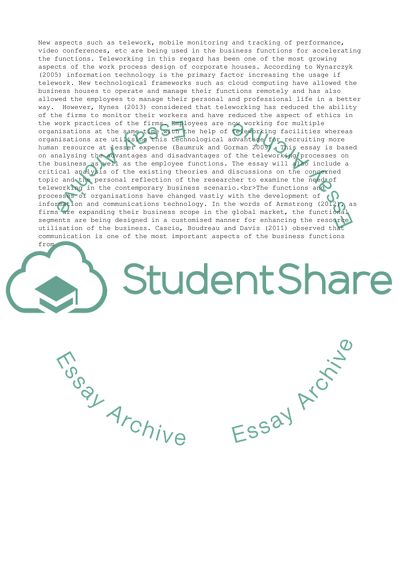Cite this document
(“INTERPRETING TECHNOLOGY: TELEWORK AND THE MYTH OF LIBERATION Essay”, n.d.)
Retrieved from https://studentshare.org/management/1690851-interpreting-technology-telework-and-the-myth-of-liberation-perspectives-on-technology-and-organisation
Retrieved from https://studentshare.org/management/1690851-interpreting-technology-telework-and-the-myth-of-liberation-perspectives-on-technology-and-organisation
(INTERPRETING TECHNOLOGY: TELEWORK AND THE MYTH OF LIBERATION Essay)
https://studentshare.org/management/1690851-interpreting-technology-telework-and-the-myth-of-liberation-perspectives-on-technology-and-organisation.
https://studentshare.org/management/1690851-interpreting-technology-telework-and-the-myth-of-liberation-perspectives-on-technology-and-organisation.
“INTERPRETING TECHNOLOGY: TELEWORK AND THE MYTH OF LIBERATION Essay”, n.d. https://studentshare.org/management/1690851-interpreting-technology-telework-and-the-myth-of-liberation-perspectives-on-technology-and-organisation.


